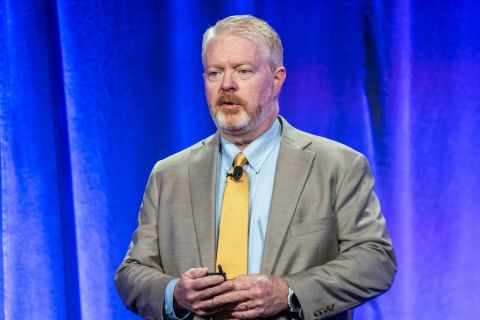The progress in the last decade in terms of subsea and seabed production facilities has been nothing short of astonishing. The groundbreaking subsea compression, separation, and boosting advances already employed on projects in the North Sea, Brazil, and West Africa have shown what is possible. With the E&P sector pushing hard to go deeper and harsher, however, the one thing it can’t afford to do is stand still.
The company has been working hard on its all-electric subsea production system and other variations for years. Fabrice Arnaud, Total’s vice president for technology and production in the company’s Africa division, spoke about the system during a session organized by the Society for Underwater Technology at SPE Offshore Europe in Scotland.
Total, along with Statoil and Petrobras, is at the top of the tree when it comes to tackling seabed production challenges. Projects such as Girassol, Dalia, Rosa, and Pazflor offshore Angola and Usan and Akpo off Nigeria (with CLOV and Egina close behind) are a testament of that.
Total’s focus now is on its deep export production treatment hub (DEPTH). This program is focused on deepwater oil and gas and has a number of innovative elements, including an all-electric production system, where the company is applying knowledge from its world-first use of the Cameron DC system on the K5F pilot field trial in the Dutch North Sea. DEPTH also includes gas/liquid separation, subsea gas compression, subsea chemical storage, local power generation, a high-integrity pressure protection system (HIPPS), and a simplified umbilical.
Total has flagged key technologies and projects under development aimed at progressing toward a fully autonomous subsea plant by 2025:
- Compact separators for ultra-deep environments;
- Subsea boosting (Pazflor, GiRI, and Moho1bis);
- Subsea pipeline electrical heat tracing (Islay);
- All-electric technology (christmas tree – K5F);
- Subsea power transmission and distribution;
- Local power generation;
- Subsea chemical storage and injection;
- Seawater treatment and injection; and
- Inspection, maintenance, and repair (IMR) tools and means.
For 2030 and with more of a focus on gas fields, the company also highlighted the need for further advances in technology in the areas of:
- Subsea gas compression;
- Subsea gas/liquid separation;
- All-electric technology;
- High power (subsea power transmission and distribution and local power generation);
- Subsea chemical storage and injection;
- Gas treatment;
- HIPPS; and
- IMR tools and means.
Many complex challenges must be overcome to achieve these advances, such as greater depths and ever-more-complex fluids such as HP/HT, high-viscosity, low-API, and wax. But Total and its peers continue to push the envelope in their own different but equally effective ways. The end result will almost inevitably be the realization of their separate but parallel DEPTH or subsea factory dreams, whatever they may eventually choose to call them.
Recommended Reading
BKV CEO Chris Kalnin says ‘Forgotten’ Barnett Ripe for Refracs
2024-04-02 - The Barnett Shale is “ripe for fracs” and offers opportunities to boost natural gas production to historic levels, BKV Corp. CEO and Founder Chris Kalnin said at the DUG GAS+ Conference and Expo.
How Diversified Already Surpassed its 2030 Emissions Goals
2024-04-12 - Through Diversified Energy’s “aggressive” voluntary leak detection and repair program, the company has already hit its 2030 emission goal and is en route to 2040 targets, the company says.


